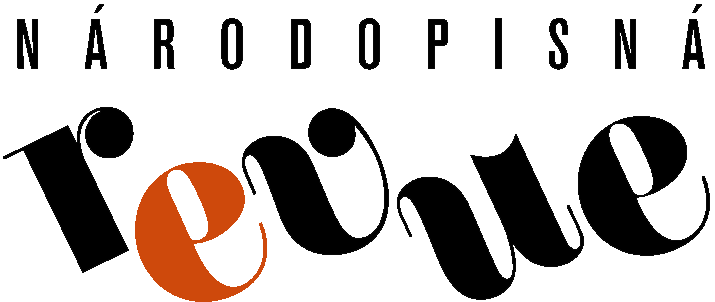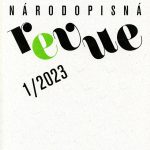Studies on the Subject of “Contemporary Dancescape”
Development and Current State of the Folk Dance, Using an Example of the Slovácko Verbuňk and the “Královničky” Ceremonial Processions (Jarmila Teturová – Jan Blažek)
Folk Dance, City, and Lifestyle (using an example of Prague, Brno and Bratislava) (Laura Kolačkovská)
Ervín Varga and Implementation of the Elements of Particularism in the Practice of Folklore Revival Movement in Slovakia after 2000 (Martina Hrabovská)
Spaces of Folk Dancing Beyond the (Slovene) Folklore Ensemble Stage (Rebeka Kunej)
Liminal Fragility of Rave – an Autoethnographic Study Reflecting Insider’s Stay in the Field (Eduard Adam Orszulik)
For all content click the button CONTENTS.
Development and Current State of the Folk Dance, Using an Example of the Slovácko Verbuňk and the “Královničky” Ceremonial Processions
Jarmila Teturová – Jan Blažek
The study deals with the development and current state of the folk dance, using an example of two significantly different motion expressions: the ceremonial “Královničky” [The Little Queens] processions in central and western Moravia and the Slovácko verbuňk in southern Moravia. These two dance expressions, appreciably differing in their type, are presented in the context of the environment where they are currently practised. The verbuňk is a distinctive representative of male folk dances, while the “Královničky” processions represent a girl element integrated in the calendar cycle. Both expressions are currently living and they fulfil their cultural and social functions. Based on archival research and analysis of available literature, an image of the historical development of these expressions from the first mentions about them up to present days has emerged. Main historical milestones are depicted graphically for comparison. The results of thorough field research have revealed the importance of the verbuňk and the “Královničky” processions for particular communities. In the case of verbuňk, the functions are competitive, identifying and representational, in the case of ”Královničky” processions, the core function is presentational, while the ceremonial function persists in both expressions. The summarization of the findings has made it possible to update the definitions of expressions’ bearers and the description and role of the audience looking on contemporary dance and ceremonial occasions.
Folk Dance, City, and Lifestyle (using an example of Prague, Brno and Bratislava)
Laura Kolačkovská
The wide spectrum of folklore activities organized regularly in the urban environment confirms the stability of folk dance position in the contemporary society. The study presents current forms of folk dance, using an example of selected folklore activities, such as dance houses, dance parties with cimbalom music, and folklore aerobic. Although these folklore activities have different contents and stories, they share their essential participatory feature. The basic methodological starting point consists in the perception of the dance as a cultural product, not only as a physical phenomenon that takes place in a certain time and space. The research was carried out in three cities: Prague in the Czech Republic, Brno in Moravia, and Bratislava in Slovakia. Events associated with the environment in which folklore activities take place are lively and growing in their intensity (e.g. new events develop). The author is interested in the importance of these activities in the urban environment. In her treatise, she also deals with the issues of identity and conscious relationship to folklore, which result in the development of so-called folk-love communities. The text is based on ongoing field research.
Ervín Varga and Implementation of the Elements of Particularism in the Practice of Folklore Revival Movement in Slovakia after 2000
Martina Hrabovská
The study deals with the development of dance folklorism in Slovakia after 2000. Attention is mainly paid to Ervín Varga (1955–2013), a leading choreographer and dance teacher, whose artistic activities started in the 1980s the process of implementing the elements of particularism in the performance, teaching and choreographic practice. He was a mentor and partially also a primary role model for the incoming generation of dance teachers, choreographers, and performers of two influential Slovakian civic associations – “Dragúni“ from Bratislava and “Klub milovníkov autentického folklóru“ from Košice – in their teaching and artistic practice. The study is based on the theoretical concept of essentialisation and particularisation by the American dance theorist Anthony Shay (2002). Using this concept, he replaces the traditional way of thinking about stylisation in dance and its theoretical reflection in three stages – quotation, imitation, and re-composition - which were introduced into the professional discourse of Slovak folkloristics by Milan Leščák and Svetozár Švehlák in the 1970s. The study elucidates the contribution of Ervín Varga to the choreographic, teaching and performance practice in folklore revival movement in Slovakia after 2000 and defines basic features of particularism in dance folklorism after 2000.
Spaces of Folk Dancing Beyond the (Slovene) Folklore Ensemble Stage
Rebeka Kunej
The article presents spaces where Slovene dance folklore is danced, or better yet represented today, beyond the established stages of folklore ensembles. The author first brings attention to local terminological issues and quandaries, exposing how folk dance in Slovenia has experienced repertoire and contextual changes. The article does not focus on the main activity of folklore ensembles, but explores other spaces and venues of dancing folk reflective dance or ethno-identity dance outside the existing stage productions of the folklore ensemble. In this it showcases its position in artistic performances, analyses the competition of pairs in folk dancing, presents the institutional transfer of knowledge within the education sphere, evaluates dance folklore's commodification for tourism and market purposes, and looks critically at the attempts to implement the Hungarian táncház in the Slovene space and dance feasts. All these attempts at engagement with new settings share the aspect of seeking transformed contextual horizons to folk dance, reshaping its form in search of new expressive possibilities.
Liminal Fragility of Rave – an Autoethnographic Study Reflecting Insider’s Stay in the Field
Eduard Adam Orszulik
The study deals with the phenomenon of rave culture in the Czech Republic, to which only little social attention is currently paid. The article in particular reflects an insider’s stay in the field, while applying prevailing autoethnographic method. Attention is paid to questions exploring raves from the perspective of ritualism, which is conceptually framed in the theory of liminality, as discussed by Victor Turner. Emphasis is also put on the situation of the rave, which for many participants provides space for spiritual and transcendental experiences through which it is possible to authentically discover one’s own identity and to find one’s place in the world. The basic attribute, forming a genuine rave, is to construct a safe-space for all participants, so that a space with an absolute respect can emerge. The ravers strictly define themselves against the mainstream club entertainment, a party that lacks implicit rules and the philosophy of rave. A significant feature of the rave is its long duration and excessive behaviour, when, within a collective experience, the ravers repetitively dance all night to produced electronic music.



